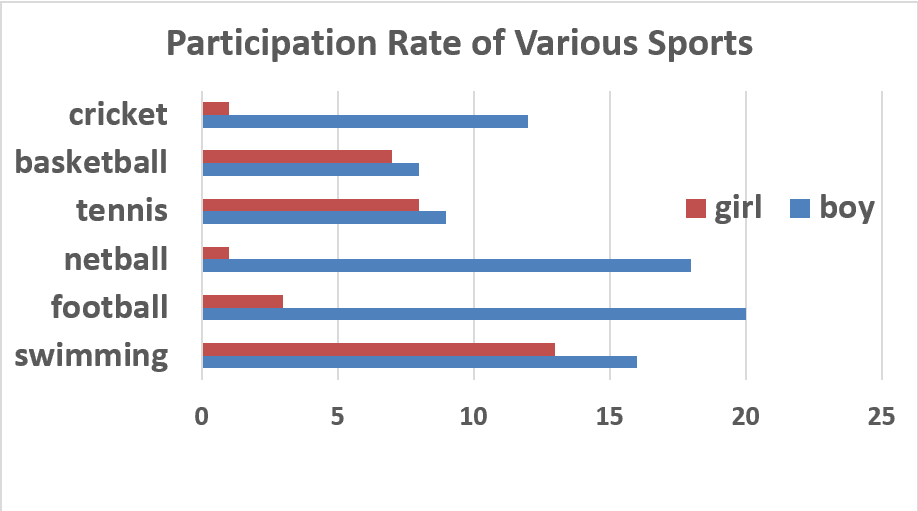GRE作文需要有生动的词汇及正确的语法、严密的逻辑结构,新鲜的论据等。想要写出GRE高分作文,大家需要掌握以下GRE作文的8个必须。下面小编就和大家分享写出高分GRE作文8个必须要做到的事 ,希望能够帮助到大家,来欣赏一下吧。
写出高分GRE作文8个必须要做到的事
1.必须研究范文,尤其是5分和6分的范文,他们真的非常重要,因为那是最权威的辅导资料!不是简单的熟读和背诵,而是逐字逐句的体会作者的意思及修辞。还有提醒一点,ETS对范文的评论也都非常精彩,建议大家参考!这会非常有利于理解考试所考的重点。
2.必须要熟练,重要的是形成惯性思维,考试时间真的是太紧张了,要想现场思考每句话的调理性真的是太难了,反正我没做到,写得时候手指不停的运转,远远超过了大脑运转的速度,只有有充分思维准备的人,才能驾轻就熟,运用自如。题目中提到politics,大脑中就应当出现Franklin Roosevelt, Lincoln, Gerhard Schroeder, Gandhi……; 提到ART,就该想到Rembrandt, Van Gogh, Starry night, night watch, Hemmingway, the old man and the sea……; 提到Scandal,就该想到Nixon,Watergate,bill Clinton,sex sandal,Enron……总之,熟练是非常非常重要的!
3.必须多修改,如果不勤修改自己的文章,就不知道自己原来的漏洞和不足在哪,闷头写,只能导致lose the stake! 当认真学习一段时间写作之后,再回头改第一篇习作,肯定会发现自己很多毛病,这说明:我们在进步!
4.必须学习别人的文章,不管是老外280,还是版主们组织的同主题习作,都是非常宝贵的学习,参考资料,看到别人的文章和写作思路,是提高自己水平的有效途径!建议大家看看版主们原来写的习作和互拍,真的会受益匪浅!例如:among,needle,pooh,鬼谷子等牛人的,不一一列举了。
5.必须多思考,多写不如多改,多改不如多想,当然这种想不是fantasy and daydream.二是针对写作思路和自我总结,当我意识到这点时,已经太晚了!
6.必须看GRE的全部题库,不要抱侥幸心理,我觉得在考试之前找到文章中出现的逻辑错误,远比在30min中为它而浪费时间值得的多。我就吃了这个亏!
7.必须多交流,无疑,听听大家的意见,有益无害。
8.必须要有自己的例子,这个,没有哪个考官会喜欢几百号人都说Van Gogh, Einstein, Curie
GRE作文素材:名人之哥伦布
哥伦布 (Columbus)
Italian mariner and navigator; widely believed to be the first European to sail across the Atlantic Ocean and successfully land on the American continent. Born Cristoforo Colombo, between August and October 1451, in Genoa, Italy. Columbus was the eldest son of Domenico Colombo, a wool-worker and small-scale merchant, and his wife, Susanna Fontanarossa; he had two younger brothers, Bartholomew and Diego. He received little formal education and was a largely self-taught man, later learning to read Latin and write Castilian.
Columbus began working at sea early on, and made his first considerable voyage, to the Aegean island of Chios, in 1475. A year later, he survived a shipwreck off Cape St. Vincent and swam ashore, after which he moved to Lisbon, Portugal, where his brother Bartholomew was living. Both brothers worked as chartmakers, but Columbus already nurtured dreams of making his fortune at sea. In 1477, he sailed to England and Ireland, and possibly Iceland, with the Portuguese marine, and he also bought sugar in Madeira for a Genoese firm.
In 1479, Columbus married Felipa Perestello e Moniz, from an impoverished noble Portuguese family. Their son, Diego, was born in 1480. Felipa died in 1485, and Columbus later began a relationship with Beatriz Enruez de Harana of Cordoba, with whom he had a second son, Ferdinand. (Columbus and Beatriz never married, but he provided for her in his will and legitimatized Ferdinand, in accordance with Castilian law.)
By the mid-1480s, Columbus had become focused on his plans of discovery, chief among them the desire to discover a westward route to Asia. In 1484, he had asked King John II of Portugal to back his voyage west, but had been refused. The next year, he went to Spain with his young son, Diego, to seek the aid of Queen Isabella of Castile and her husband, King Ferdinand of Aragon. Though the Spanish monarchs at first rejected Columbus, they gave him a small annuity to live on, and he remained hopeful of convincing them. In January of 1492, after being twice rebuffed, Columbus obtained the support of Ferdinand and Isabella. The favorable response came directly after the fall of Granada, the last Moorish stronghold in Spain, which led Spanish Christians to believe they were close to eliminating the spread of Islam in southern Europe and beyond. Christian missionary zeal, as well as the desire to increase Spanish prominence in Europe over that of Portugal and the desire for gold and conquest, were the primary driving forces behind Columbus?historic voyage.
On August 3, 1492, the fleet of three ships he Ni, the Pinta, and the Santa Maret forth from Palos, on the Tinto River in southern Spain. After spending nearly a month in the Canary Islands, off the mainland of northwest Africa, the ships continued west, following the parallel of Gomera. According to records of the voyage, weather remained fair throughout. The first sighting of land came at dawn on October 12. (Though Columbus claimed that he himself, on the Ni, was the first to see land, later evidence showed that the sighting was made from the Pinta.) The place of the first Caribbean landfall was most likely modern San Salvador, or Watling Island, in the Bahamas.
Thinking he had reached the East Indies, Columbus referred to the native inhabitants of the island as ndians,?a term that was ultimately applied to all indigenous peoples of the New World. The three ships sailed among other Bahama islands and landed at Cuba, which Columbus convinced himself was the mainland of great Cathay (China). There was little gold there, and his exploration continued by sea to Ayti (Haiti) on December 6, which Columbus renamed La Isla Espa la, or Hispaniola. He seems to have thought Hispaniola was Cipango (Japan); in any case, the land was rich with gold and other natural resources, and allowed Columbus to return to Spain in the spring of 1493 with riches enough to convince his sovereigns of his success.
After a difficult journey back to Europe, Columbus paid a visit to King John II of Portugal, which prompted suspicion that he had collaborated with Spain enemy. He subsequently appeared before Isabella and Ferdinand in Barcelona, displaying gold, exotic birds, herbs and spices, and even human captives that he had brought from the New World. The sovereigns were easily persuaded to fund a second voyagehis time, at least 17 ships and 1,300 men set sail from Ciz on September 25, 1493. En route to Hispaniola and Navidad, the settlement he had founded there, Columbus and his fleet entered the West Indies near Dominica (which he named) and proceeded past Guadeloupe and other Lesser Antilles before reaching Borinqu (modern Puerto Rico).
Upon reaching Navidad, Columbus found the settlement destroyed and the Spanish settlers dead, victims of strong native resistance against their colonial tactics. After building more fortified settlements, including one named La Isabela, in honor of the queen, Columbus declared himself governor of Hispaniola, intending it to become a trading post for European settlers to conduct business with the rich Oriental empires he expected to find. After searching the Cuban coastline and Jamaica for gold, Columbus had decided that Hispaniola was the richest source of gold and other spoils.
In February 1494, 12 ships returned to Spain from La Isabela, commanded by Columbus?associate, Antonio de Torres. Two more of his subordinates, Alonso de Ojeda and Pedro Margarit, led a campaign of violence against the native inhabitants of Hispaniola, in revenge for the murder of their comrades at Navidad. They killed and captured many natives, taking them as slaves, seemingly with the full knowledge and approval of Columbus. Throughout the next two years, the Spaniards continued their resolute conquest and colonization of Hispaniola.
On March 10, 1496, Columbus set sail for Spain, leaving his two brothers, Bartholomew and Diego, in charge of Hispaniola. When he reached C iz, he found Spain at war with France and his benefactors even more eager to acquire gold and other riches from the New World. In command of six ships, three with explorers and three with provisions for settlement on Hispaniola, Columbus set sail for a third westward crossing on May 30, 1498. The first land sighting was at Trinidad, which Columbus named in honor of the Holy Trinity.
When the expedition arrived back at Hispaniola, he found it in disarray, with a revolt mounting against his brothers led by the alcalde (mayor) of La Isabela, Francisco Rold. The chiefs of the indigenous tribes in Hispaniola, as well as a number of Spaniards, were incensed by Bartholomew Columbus?reorganization of the gold production process, which favored certain Spaniards over others and exploited the native labor force. As Columbus tried to restore order, sometimes resorting to hangings, Rold and his fellow opposition leaders sent so many letters of complaint against Columbus and his brothers back to Castile that the rulers sent the Spanish chief justice, Francisco de Bobadilla, to Hispaniola. Bobadilla took Columbus and his brothers into his custody and sent all three men back to Spain in shackles.
Ferdinand and Isabella later ordered Columbus?release, and he appeared before them at Granada in December 1500. The monarchs allowed that Columbus was a superior mariner and navigator, but questioned his abilities to govern. Another man was appointed governor of Hispaniola, and Columbus was given support and permission to begin a fourth expedition. As he prepared for the voyage, which would be his last, Columbus revealed in his writings an even stronger mystical vision of himself as the bearer of Christianity into worlds unknown, a vision that had contrasted sharply with the realities of conquest and colonization in Hispaniola.
He set sail from C?iz on May 9, 1502, with four ships, arriving at Santo Domingo on Hispaniola on June 29. Continuing on down past Jamaica, the southern shore of Cuba, Honduras, and the Mosquito Coast of Nicaragua, Columbus showed navigation skill in a voyage as difficult as his first crossing of the Atlantic. He was searching for the strait to India, but obviously did not find it, and was eventually forced to turn back. En route to Hispaniola, however, his ships were unable to make the distance and had to be beached on the coast of Jamaica in June of 1503. Columbus and his crew spent a year in Jamaica before returning to Spain on a ship sent from Hispaniola on November 7, 1504. Upon arriving there, Columbus learned that Queen Isabella, long his most sympathetic supporter, was on her deathbed. She died on November 26, 1504.
By the end of his final voyage, Columbus?health had deteriorated; he was suffering from arthritis as well as the aftereffects of a bout with malaria. With a small portion of the gold brought from Hispaniola, Columbus was able to live relatively comfortably in Seville for the last year of his life. He was emotionally diminished, however, and felt that the Spanish monarchs had failed tto live up to their side of the agreement and provide him with New World property and gold, especially after Isabella’s death. Columbus followed the court of King Ferdinand from Segovia to Salamanca to Vallodid seeking redress, but was rejected. He died in Vallodid on May 20, 1506. His remains were later moved to the Cathedral of Santo Domingo in Hispaniola, where they were laid with those of his son Diego. They were returned to Spain in 1899 and interred in Seville Cathedral.
The debate over Columbus?character and legacy has continued into the twenty-first century, revived in 1992 with the celebration of the quincentenary of his first voyage to the New World. Though the United States celebrates a national holiday in his honor (on the Monday closest to October 12, the date of the first landfall in 1492), much more attention has been paid in recent years to the Spanish explorers?treatment of the Native American peoples, and the word discovery?has been replaced by encounter?when used to describe Columbus?achievements in regard to the Americas. Columbus went to his grave believing he had reached the shores of Cathay, and that he was a divine missionary, ordained by God to spread Christianity into the New World. In modern society, many have made Columbus out to be a villain and a symbol for all that is exploitative and predatory about the colonization of the Americas by Europe. The true Columbus, it is certain, lies somewhere in the middle.
GRE作文经典核心句型分段介绍
开头
1. The arguer may be right about…, but he seems to neglect(fail) to mention (take into account) the fact that….
2. Although many people believe that… , I doubt (wonder) whether the argument bears much analysis (close examination).
3. It would be possible (natural/reasonable) to think (believe/take the view) that…, but it would be absurd (wrong) to claim (argue) that…
4. A close (careful) inspection (examination/scrutiny) of this argument would reveal how flimsy (groundless/fallacious) it is.
5. However just (logical/sound/valid) this argument maybe, it only skims the surface of the problem.
结尾
1. From what has been discussed above (Taking into account all these factors/ Judging from all evidence offered), we may draw (reach/come to /arrive at) the conclusion that…
2. It is high time that we place (lay/put) great (special/consideration) emphasis on the improvement (development/increase/promotion) of….
3. There is no easy (immediate/effective) solution (approach/answer/remedy) to the problem of…,but ….might be useful (helpful/beneficial).
4. Following these methods (suggestions) may not guarantee the success in (solution to)…, but the payoff will be worth the effort.
5. For these reasons, I strongly recommend that….
己准备必须多思考,拿了个题目想尽办法去分析,去了解如何写这个题。比如说考试抽到的这个题(这个题比较好写),具体题不记得了,我复述:It should be required that student so far major take courses in a different major in college。
这个题思考的时候就可以从很多方面入手,比如:对major进行分类,文科类、科学类、纯理论类 (theoretical,math,physics等),他们肯定是不相同的。然后可以说不同的major对其他知识的需求,然后就是college对这类的限制(学到更广的知识,目的是什么,结果如何?),到了社会上如何。
甚至,光知识对一个人自身的影响,以及反写等等。能想到这么多,并且把它们分段,有组织地串联起来,这篇文章就算是解决了。这也是一个非常明显的可以正反写的题目(让步、正面写、特例),所有的东西都能为主论点服务,因此相对比较难走题。
必须及必看GRE写作精粹核心句型
第一段:开头段。主要是归纳论点,说明论点有问题,存在逻辑漏洞,准备发起进攻
第一层:
This argument concludes/recommends/argues that…
第二层:
To support this conclusion the writer cites…/points out that…
第三层:
However, this argument suffers from several critical flaws and is therefore unconvincing/ unpersuasive as it stands.
第二段和第三段甚至第四段:分类别去攻击各个逻辑错误。(以因果关系类错误为例)
One problem with the argument is that, the editorial observes a correlation between… and …, then concludes that the former is the cause of the latter. However, the editorial fails to rule out other possible explanations for…For example,… Any of these factors, or other social, political or economic factors, might lead to…Without ruling out all other such factors it is unfair to conclude that…
第五段:结尾段
作者的结论似乎是合理的,但是通过论证,不是这样的。因此作者在做出决定之前,应该还要考虑其他情况。我们通过一篇文章作为实例来介绍Argument的论证步骤和论证方法以及文章结构。
In the final analysis, the letter's author fails to adequately support the recommendation that…To bolster the argument, the arguer must provide detailed demographic/statistical evidence showing that…The author must also provide evidence--perhaps by way writer cites…/points out that…
写出高分GRE作文8个必须要做到的事相关文章:
★ GRE写作:高分技巧
★ GRE写作:写作论据的技巧
★ GRE写作:高分冲刺
★ 2020高中优秀作文五篇
写出高分GRE作文8个必须要做到的事
上一篇:托福写作科技类常用词整理一览
下一篇:GRE写作需容易被忽略的细节




